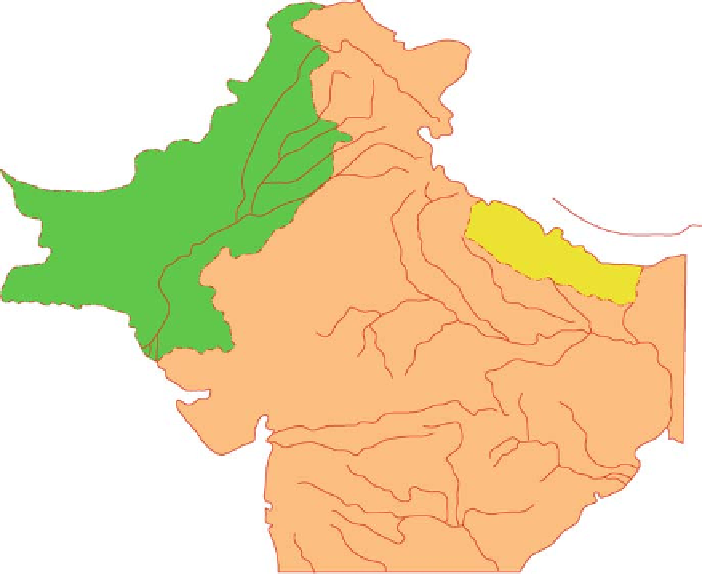Geoscience Reference
In-Depth Information
supply from other sources, previously received by it from the Sutlej, the Ravi and the
Beas but the agreement could not be through, as funds were not available for these
works from sources outside the basin countries. The World Bank established the
'Indus Basin Development Fund', to which, besides Pakistan and India, Australia,
Canada, the Federal Republic of Germany, New Zealand, the United Kingdom and
the United States also contributed. India agreed to contribute 62 million pound ster-
ling, in equal instalments toward the cost of these works. The agreement also made
it clear that India would have no right to take part in the decisions on the system of
works and also have no responsibility.
The treaty provided for regular exchange of river and canal data and for future
cooperation. A permanent Indus Commission was formed by the two permanent
commissioners, selected by two countries from among expert engineers, competent
in hydrology, water management and use. The Commission would meet regularly,
alternately in Pakistan and India and tour to both countries to clear any doubt or diffi-
culty which might arise. It would also make cooperative arrangements to implement
the treaty, submit an annual report to the two governments and resolve, by agree-
ment, any differences concerning the interpretation, or application, of the treaty.
Provisions also exist in the treaty, regarding the procedure to be followed, if the
Commission could not resolve any problem by reference to a 'Neutral Expert' or
a 'Court of Arbitration'. A plan of Indus river basin is shown in Fig. 13.1. The
CHINA
(TIBET)
I N D I A
Fig. 13.1
Index plan of Indus river system

Search WWH ::

Custom Search